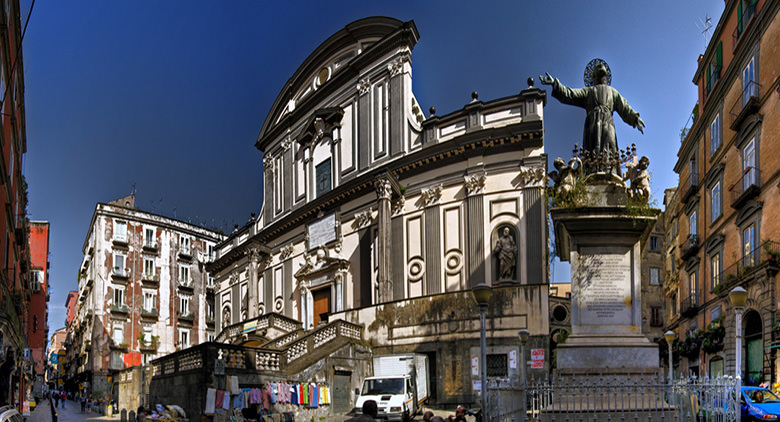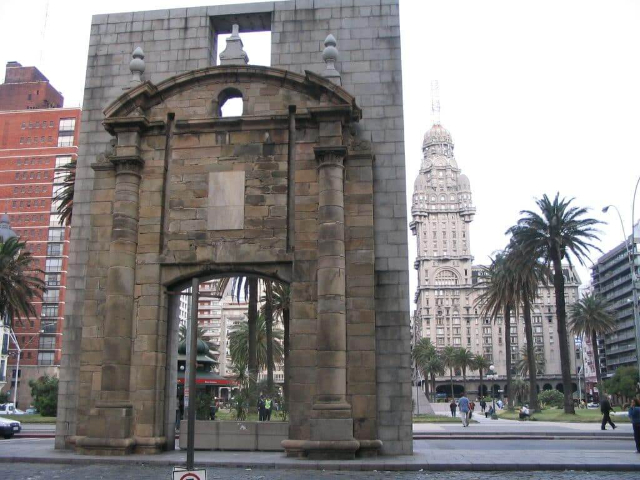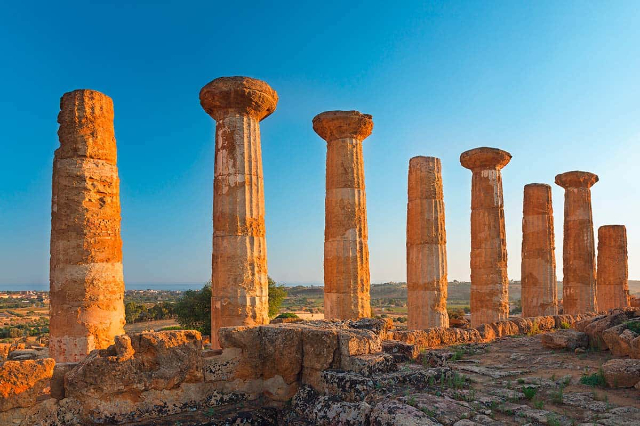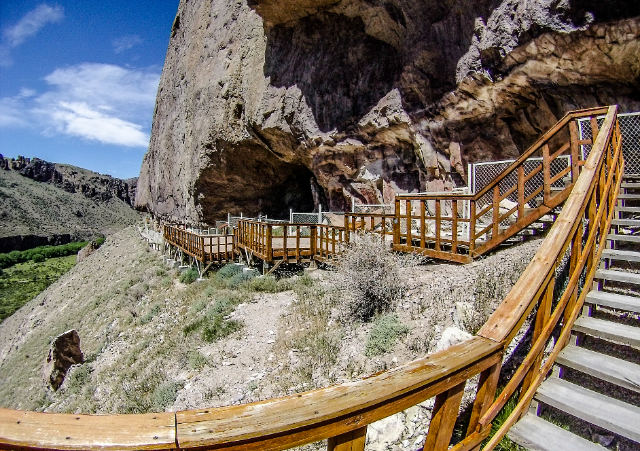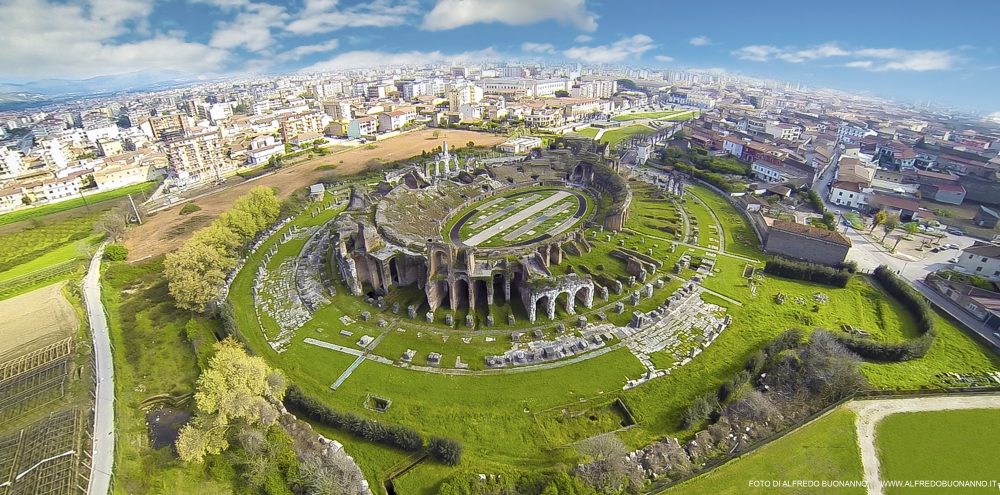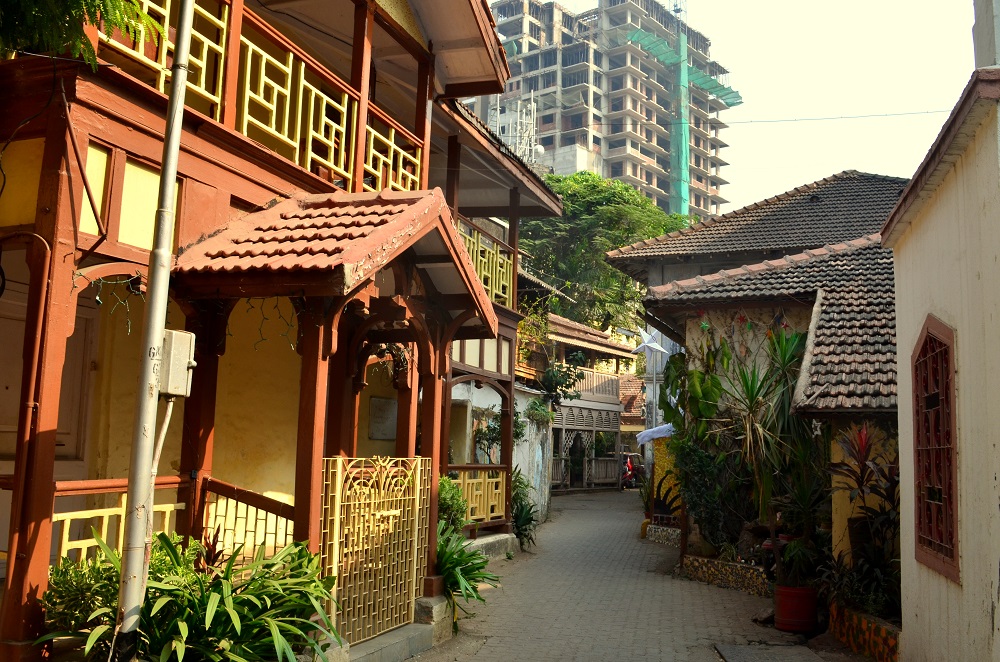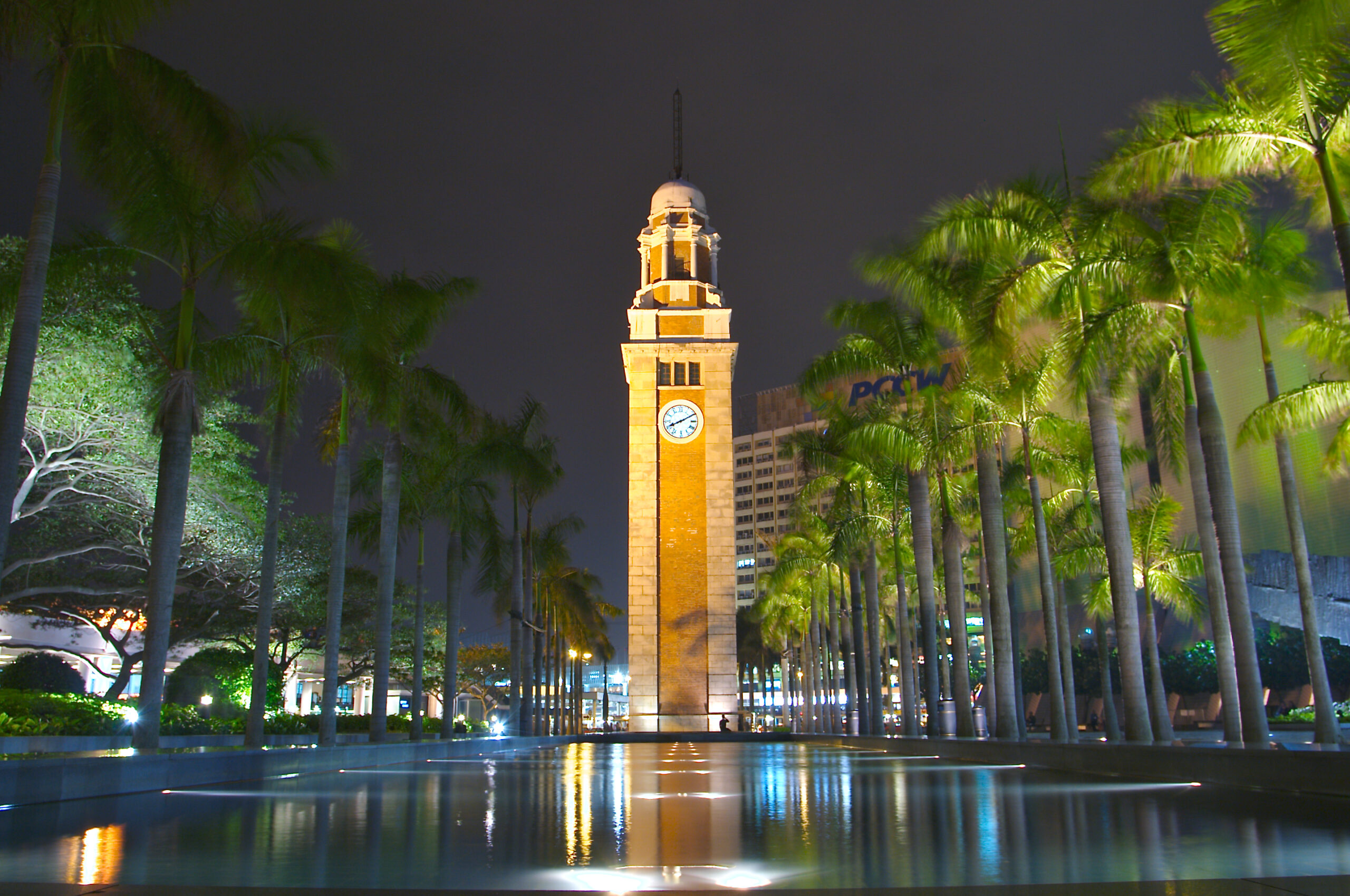Piazza San Gaetano is one of the city’s historic squares, here in fact stood the ancient Agora in Greek times, and the ancient Forum in Roman times. Two buildings of extreme religious importance such as the Basilica of San Paolo Maggiore and the Basilica of San Lorenzo Maggiore overlook the square. A statue of St. Gaetano is erected in the center of the square; the entrance to Naples Sottorreanea is also near the square. There are also other noteworthy churches nearby, such as the Church of San Gregorio Armeno, the Church of Sant’Angelo a Segno; and two palaces, the Palazzo Filippo d’Angiò and Palazzo Capuano, as well as the remains of the Palazzo de Scorciatis.
Piazza San Gaetano is the oldest square in Naples, and the most important in the Greco-Roman period. The square takes its name from the Monument of the saint placed in its center, erected for a vow made after the cessation of the plague in 1656, and from the church of San Gaetano, more commonly called San Paolo Maggiore.
In the Greco-Roman period, the most important public buildings of the time were located in this square, and in the subsoil of the square, six meters deep, are still preserved some remains of the ancient temples, and the ancient theater of Claudius Nero. The square was of paramount importance at the time; the twelve fraternities of the people met here, ambassadors were received here to negotiate peace and war, Roman emperors were welcomed in grand style, and even the people gathered to repel the onslaught of the Saracens and Lombards. The original name of the forum was Mercato Vecchio, a name that changed to Piazza San Lorenzo after the construction of the church of the same name.
The Church of San Lorenzo gained its greatest importance with the Franciscans in 1234, when it was renovated with the help of Charles of Anjou, who financed the whole thing and also initially provided the Franciscans with his own architect. For a long time the Gothic-style church was the most beautiful and elegant in the city; it was habitually frequented by the royalty and aristocrats of the time, as the noble burials inside also testify. It is also said that it was here that Giovanni Boccaccio met his muse inspiring his poems, Maria d’Acquino, daughter of King Robert. In 1507 a new bell tower was built that could also serve as a tower, complete with artillery, taking advantage of the church’s central location. For this reason, taken as a point of shelter, it was besieged three times, first by the Neapolitans outraged against Don Pedro de Toledo, then by Masaniello, and finally in 1701, when it was then finally decided by the Duke of Popoli, who took it over, to restore the tower’s unique natural function as the church’s bell tower. In 1662 the church underwent the rebuilding of the facade, in Gothic art, by Dionisio Lazzari. This work gave way to numerous manipulations, from Sanfelice’s criticized Baroque restoration to the last in 1944 with a restored Gothic order on the facade. Inside the church is a magnificent cloister with ancient decorations, and the hall of the former refectory, inside which in March 1443 King Alfonso I of Aragon presented Ferrante to the nobles of the time, having him recognized as his successor, and where Charles V collected a million ducats from the very naive Neapolitans on the occasion, for the bogus purpose of preventing wars. That hall was also the seat of the Tribunal of St. Lawrence, a body to which the representatives of the Seats of the nobles, and those of the people, belonged. The convent also goes down in history because it was a point of shelter and prayer for Francesco Petrarch and other friars during a very strong cloudburst with tornadoes and tidal wave that hit Naples in 1345. This episode, in which the poet risked his life, along with other unpleasant circumstances, was one of the reasons why Francesco Petrarch did not particularly like the city of Naples.
The square also takes its name from the neighboring church, the Church of San Paolo Maggiore, called by most the Church of San Gaetano in memory of Gaetano da Thiene, who founded one of his convents here in 1538. The church, in addition to its troubled history, is famous because, during restoration in 1962 from postwar damage, the friars discovered a small underground cemetery, with the remains of the ancient temple of the Dioscuri and the bodies of St. Gaetano and other blessed ones. Today that place is used as a crypt, and has the appearance almost of a second church.
Near the church of San Paolo Maggiore is one of the noblest palaces of the Aragonese period, the Palace of Giulio de Scorciatis, which belonged to one of the most powerful men of the time; only a few remains of the building, however. There are also two other palaces, the noble palace of Filippo d’Angiò, the Capuano Palace.
